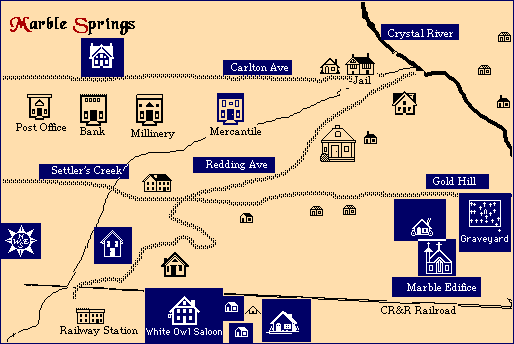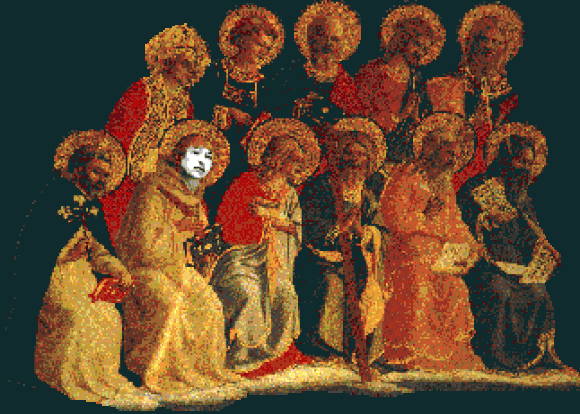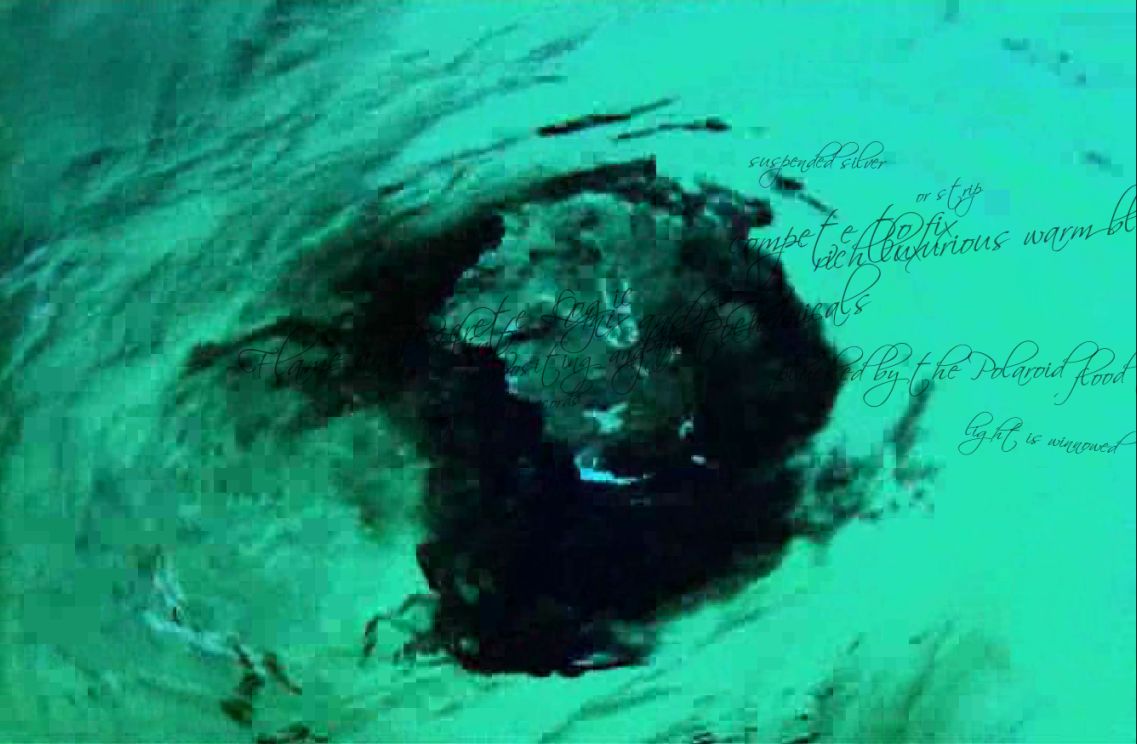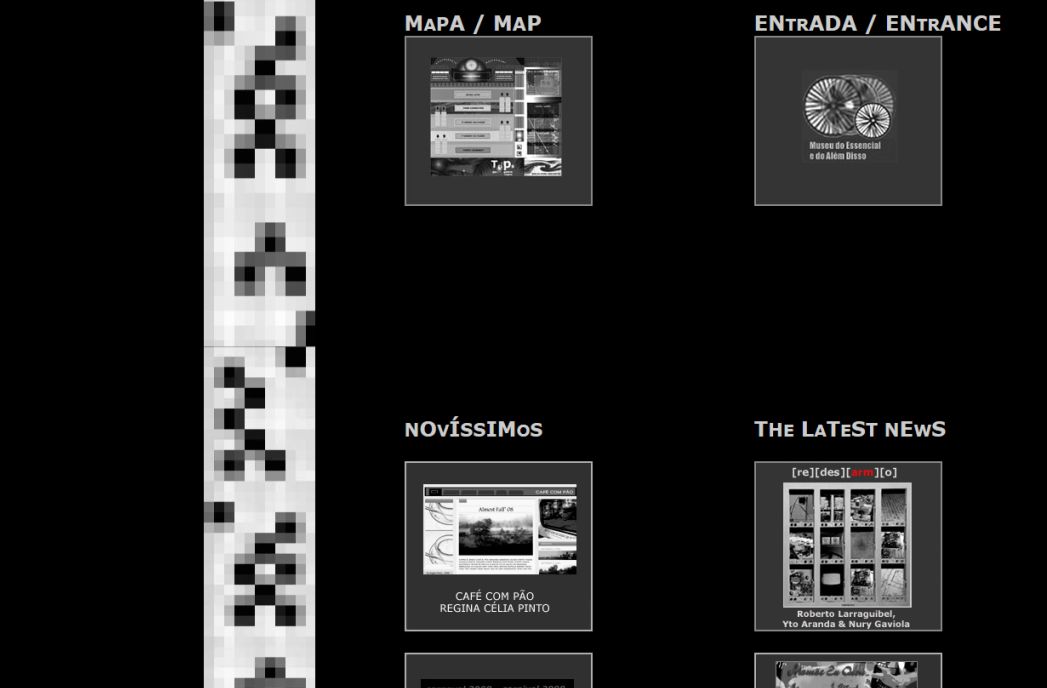|
Screen from Deena Larsen's Marble Springs
Electronic Literature:
Women Writers
Marjorie Coverley Luesebrink //
M.D. Coverley |
|
[This syllabus is designed to be
used – with modifications - for a traditional classroom, a
hybrid class, or an online offering.]
http://califia.us/MLASyllabusLuesebrink
COURSE DESCRIPTION: Electronic
Literature: Women Writers is a survey course designed to
introduce students to the basics of electronic literature and
women creative writers from 1985 to the present.
It features pieces by digital pioneers, innovations of
the late 1990’s, and the increasingly complex works after 2000.
The practitioners include early web authors, the Eastgate
writers, international writers from Europe, Asia, South America,
and Canada.
Students will read representative works and write about the
effects, content, and structure of this literature. |
|
Unit I.
What is Electronic Literature?
According to Wikipedia: Electronic literature or digital
literature is a genre of literature encompassing works created
exclusively on and for digital devices.
To see Sample lecture notes, More Author
Information, and Additional Authors,
click here.
Assignment:
Young
Hae Chang Heavy Industries:
The Last Day of
Betty Nkomo
//Based in Seoul, South Korea, YOUNG-HAE CHANG HEAVY
INDUSTRIES combines text with jazz to create Web-based New Media
work.
The Last Day of Betty
Nkomo (2000) is a heartrending account of a woman dying of
AIDS.
The Last Day of
Betty Nkomo:
http://www.yhchang.com/BETTY_NKOMO.html
Website:
http://www.yhchang.com/
Deena
Larsen:
Marble Springs //
Deena Larsen’s Marble Springs
(1993, Eastgate Systems) [illustrated by Kathleen A.
Turner-Suarez] makes a remarkable jump into the possibilities of
electronic narrative.
Marble Springs:
http://marblesprings.wikidot.com/
Website:
http://www.deenalarsen.net/
Unit II. Women in E-Literature To see Sample lecture notes, More Author Information, and Additional Authors, click here
Assignment:
Read – Adrianne
Wortzel:
The Electronic Chronicles
//American contemporary artist Adrianne Wortzel
creates
unique and innovative interactive web works, robotic and
telerobotic installations, performance productions, videos, and
writings. RIGHTING NOVEL FOR THE WORLD WIDE WEB includes
The Electronic Chronicles
(1995).
The
Electronic Chronicles:
http://www.adriannewortzel.com/electronic-chronicles-contents/
Website:
http://www.adriannewortzel.com/
Olia Lialina: My boyfriend
came back from the war //
Moscow-born Olia Lialina is a pioneer internet artist,
theorist, experimental film and video critic, and curator. My
boyfriend came back from the war was made in 1996.
My boyfriend came back from the war:
http://www.teleportacia.org/war/
Website:
http://art.teleportacia.org/olia.html
Write –
Choose one of the works we have seen in the first two
units and write a short reader-response – summarizing the work
as you understood it, describing your response, and evaluating
its impact.
To see Sample lecture notes, More Author Information, and
Additional Authors, click here.
Unit III. The First Wave Pioneers
Did
women have the same access to technology that men did? For
the most part, the answer was no. Women tended to avoid
classes in math and science. In the arts, while men,
supported by institutions and private grants, were deeply
involved in Art and Technology, women were more lightly
represented. This all began to change with the advent of
the personal computer and the fact that, for many women, it was
now possible to engage in the latest technology at home, with
off-the-shelf, affordable products.
Assignment:
Read –
Judy
Malloy: Uncle Roger //
Judy Malloy is a
California poet and an early creator of online interactive and
collaborative fiction. She wrote
Uncle Roger (1986),
the first online hyperfiction, for the Art Com Electronic
Network on the WELL.
Uncle Roger:
http://www.well.com/user/jmalloy/uncleroger/partytop.html
Website:
http://www.well.com/user/jmalloy/
Shelley Jackson:
Patchwork Girl
//Shelley
Jackson is an American writer and artist known for her
cross-genre experiments, including her groundbreaking work of
hyperfiction, Patchwork Girl.
Patchwork Girl
(1995, Eastgate Systems) is a narrative constructed on the body
itself.
Patchwork Girl
is available through Eastgate Systems:
http://www.eastgate.com/people/Jackson.html
MEZ:
_the data][h!][bleeding
t.ex][e][ts //
MEZ (Mary Ann Breeze) is
an Australian-based artist and
practitioner of net.art. Widely
recognized for her signature codework language – mezangelle –
she has been creating a
hybridization of human-only and digital languages since 1995.
_the
data][h!][bleeding t.ex][e][ts
:
http://netwurkerz.de/mez/datableed/complete/
Website:
http://netwurker.livejournal.com/
Write –
Choose one of the works we have seen in the three units and
speculate about why the content or form might be a useful
vehicle using media-based communication for that artist.
To
see Sample lecture notes, More Author Information, and
Additional Authors, click here.
Unit IV. The Evolution of Poetic Design
Certain kinds
of poetry (Visual Poetry, Concrete Poetry) have always placed
importance on the visual aspect of the page.
Digital poetry emphasized and expanded the possibilities
for text, image, sound, and code language as material elements.
Ana
Maria Uribe (dec.):
Tipoemas y Anipoemas //
Ana Maria Uribe (1951-2004) is an Argentine visual poet who made
work online beginning in 1997 (after
working in other media for many years). She started writing
visual poetry in the late 1960’s, and her style continued to
evolve. Her works
reflect, as Jim Andrews writes, “a remarkable understanding of
the poem on the screen as a performance." In the poems, text is
generally used pictorially and rotated or otherwise manipulated
to introduce a sense of motion into the scene.
Deseo -
Desejo - Desire (2002) is one such piece that illustrates
the original nature of her poetry.
Deseo -
Desejo - Desire:
http://www.vispo.com/uribe/deseo/deseo.html
Website
(maintained by Jim Andrews):
http://www.vispo.com/uribe
Annie
Abrahams:
Separation / Séparation
//
Annie Abrahams is a Dutch performance artist working
largely in France. She specializes in video installations and
internet-based performances which also consist of writings that
derive from collective interaction.
In addition to her landmark work
Being Human
(1997-2007), Abrahams has reinvented how work might look on the
screen. A good
example of this is Separation / Séparation
(2002),
reflecting the body’s process in reading and writing, and the
trauma of overuse.
The piece must be read slowly, and the screen appears blank
unless and until the reader coaxes out a message.
Separation / Séparation:
http://collection.eliterature.org/2/works/abrahams_separation/separation/
Website:
https://aabrahams.wordpress.com/
Camille Utterback:
Text Rain //
Camille Utterback is an interactive installation artist
currently based at Stanford University. Initially trained as a
painter, her work is at the intersection of art and interactive
literature. Created in 1999 with Romy Achituv, Text Rain is an
interactive installation in which participants use the familiar
instrument of their bodies to do what seems magical
–
to lift and play with falling letters that do not really exist.
Text
Rain:
http://camilleutterback.com/projects/text-rain/
Website:
http://camilleutterback.com/
Choose one of the authors we have read so far and
explore other writings by that woman.
Write a short piece describing a work you liked.
To see Sample lecture notes, More Author Information, and
Additional Authors, click here.
Unit V. The Expansion of
Sensory Effects:
As the web
developed in the late nineties, design possibilities expanded.
Sound, image, layering, frames, and movement were used by
women to create strikingly original online work.
Assignment:
Auriea
Harvey: Genesis //
Auriea Harvey is an
African-American artist; she co-authors with Michaël Samyn, a
Belgian artist and programmer.
In 1999 they co-founded the zine Entropy8Zuper! During
this period, they created works such as The Godlove Museum,
a website that showcased their storytelling strengths by merging
Biblical stories with narratives drawn from their own lives and
contemporary culture.
Genesis is the beginning of these visually compelling
pieces.
Genesis:
http://entropy8zuper.org/godlove/fuxation/
Website:
http://entropy8zuper.org/godlove/
Claire
Dinsmore: The Dazzle as Question //
Claire Dinsmore is a designer who has turned her hand to
jewelry, interiors, and web sites.
Starting in the late 1990’s, she employed her design
background to create lovely fusions of image, sound, and
movement.
The
Dazzle as Question
(2002) was published in “Poems That Go.”
The Dazzle as
Question:
http://poemsthatgo.com/gallery/summer2002/dazzle/launch.htm
Website:
http://www.studiocleo.com/
Write –
This period saw many new writers emerge.
Go to the Electronic Literature Collection page, browse
through the offerings, choose one and write a resder-response
about it.
http://collection.eliterature.org/
To see
Sample lecture notes, More Author Information, and Additional
Authors, click here.
Unit VI. Games and Metagames
Part of
the experimental fictional world of digital literature during
this period included new types of story generation and crossover
media experiments. Influenced by the possibilities of gamin
culture, some of these works were game-like in structure.
Read –
Natalie
Bookchin: The Intruder //
California-based Natalie Bookchin is well known for the variety
of her work
– online computer games, collaborative performances and
"hacktivist" interventions, interactive websites, and widely
distributed texts and manifestos.
The Intruder
(1999) is a web-based, hybrid, interactive narrative that
uses a
series of classic videogames to propel the story forward, and
was innovative in its use of gaming as a strategy for
interactive storytelling –
merging literature, art, and games.
It was based on 1966 short story by Jorge Luis Borges,
also titled “The Intruder.”
The Intruder:
http://bookchin.net/intruder/
Website:
http://bookchin.net/
Donna Leishman:
Deviant: The Possession of Christian Shaw //
Scotland-based Donna Leishman is an illustrator, animator, and graphic
designer.
Deviant: The Possession of Christian Shaw (2004) is a pioneering work in several ways:
It takes its inspiration from a document of the 1696
witch trial of Christian Shaw’s purported demonic possession.
But the animated, interactive graphic landscape is
strangely sparse and forces the reader to probe carefully into
the Flash-based labyrinth of the story.
The interface offers well-hidden "active" portals, which
may or may not move the reader forward.
A series of “signs” signal the navigational
possibilities.
Deviant:
The Possession of Christian Shaw:
http://collection.eliterature.org/1/works/leishman__deviant_the_possession_of_christian_shaw.html
Website:
http://www.6amhoover.com/
Write –
Choose a piece from a list of women “game and
metagame” writers and explain how it might be both game and
literature.
To see Sample lecture notes, More Author Information, and
Additional Authors, click here.
Unit VII.
Media-Rich Fusions
Although time divisions in electronic literature are arbitrary,
around 2000 we began to see elaborations of strategies for
Narrative Structure and Architecture, Poetic Design, Visual and
Aural Effects, Games and Metagames, Installations, and
Coding.
Increased bandwidth, new technologies, and a maturing
field brought more impressive inventions; these characterized
elit fiction, poetry, and creative non-fiction through 2010.
Read – Giselle
Beiguelman: Code Movie 1
//
Giselle Beiguelman is a Brazilian media artist. Her work
includes interventions in public spaces, networked projects, and
mobile art applications; Code Movie
1 (2004) treats the
hexadecimal code of JPG images as a signifier in its own right.
Code
Movie 1:
http://collection.eliterature.org/1/works/beiguelman__code_movie_1.html
Website:
https://www.digitalartarchive.at/database/artists/general/artist/beiguelman.html Geniwate:
Concatenations //
Geniwate’s Rice
(also spelled Geniwaite in some sources, Dr. Jenny Weight is an
Australian writer) was
the co-winner of the 1998 trAce/AltX hypertext competition.
She went on to create fascinating generative poetry with
intricate coding, such as
Concatenations (2005).
Concatenations:
http://collection.eliterature.org/1/works/geniwate__generative_poetry.html
Screen from Stephanie Strickland's
slippingglimpse
Stephanie
Strickland:
slippingglimpse //
Stephanie Strickland is a New York City-based print and
electronic poet.
Among her several groundbreaking pieces the eco-poem
slippingglimpse (2007)
stands out, a collaboration between Strickland, Cynthia Lawson Jaramillo, and
videographer Paul Ryan.
slippingglimpse:
http://www.slippingglimpse.org
Website:
http://www.stephaniestrickland.com/
Caitlin Fisher: Andromeda //
Andromeda
(2008) is just one of the suites of projects produced over the last two
decades by Canadian artist Caitlin Fisher
Andromeda, a
poem about stars, loss, and women named Isabel, breaks new
ground in coding, architecture, and platform.
Andromeda:
http://collection.eliterature.org/2/works/fisher_andromeda.html
Website:
http://www.yorku.ca/caitlin/home/
Regina
Célia
Pinto: Viewing Axolotls
//
Pinto is best known for her online compendium of excellent South American
elit writing, the Museum
of the Essential and Beyond That.
A
Brazilian artist, Pinto’s utilization of technology is permeated
with a poetic and playful sensibility.
Global awareness and
desire to make connections characterize most of her work.
Viewing Axolotls
can be accessed from the library of the Museum.
Museum
of the Essential and Beyond That:
http://arteonline.arq.br/
Website:
http://arteonline.arq.br/library.htm
Sharon Daniel:
Blood Sugar
//
Sharon Daniel is a California-based media artist who produces interactive
and participatory documentaries focused on issues of social,
economic, environmental, and criminal justice.
Blood Sugar (2010) operates as a companion piece to her and
designer Erik Loyer's earlier, Webby award-winning Vectors
project
Public Secrets
(2008).
Blood
Sugar:
http://bloodandsugar.net/
Website:
http://www.sharondaniel.net/
Choose one of the pieces above and identify and explain the use
of different media in the work.
To see Sample lecture notes, More Author Information, and
Additional Authors,
click here.
Unit VIII.
Collaborations in Hyperfiction
One delightful development in e-lit was the
online collaborative fiction site.
Several of these were produced – but not all of them are
still available.
Sue Thomas and Teri Hoskin created the hypertext
web piece,
Noon Quilt
(1998-1999) which was comprised of “quilt pieces” submitted to
the trAce OnlineWriting Community by women.
Christie Sheffield Sanford
hosted a piece in which collaborators chose an hour of the day
to tell the story of
The
Book of Hours of Madame de Lafayette (1997).
Carolyn Guyer invited
women to write about their mothers for the new century in
MotherMillennia (1999). These
collections encouraged women to try their hand at born-digital
writing in an atmosphere of support and friendship.
Collaborative projects have continued to evolve – both in
complexity and scope.
Read –
Sue Thomas, Terry Hoskin:
Noon
Quilt // Noon Quilt (1998) is one of the many projects
that are currently being restored in the Electronic Literature
Repository (directed by Dene Grigar at Washington State
University. Although
not available right now, it will be in the future.
In the meantime, the description is available at ELMCIP
https://elmcip.net/node/999
Visit this cite and read the entry.
Helen Burgess: Tasty Gougère //
Helen J Burgess
is an Associate Professor of English at North Carolina State
University, editor of the journal Hyperrhiz: New Media
Cultures, and co-founder of the long-form digital
monograph series Electric Press. In 2009 Nick Montfort created a
poem called Taroko Gorge.
He made the code available for others to do retakes and
remixes. The poem
has inspired many to rework its source code to explore a variety
of topics in a way that retains its form. This e-poem is the
seed for a native e-poetic form. The results have been both
interesting and delightfully entertaining.
Tasty Gougère:
http://collection.eliterature.org/3/work.html?work=tasty-gougere
Website:
http://www.sharondaniel.net/
J.R. Carpenter:
Along the Briny Beach //
J. R.
Carpenter is an artist, writer, researcher, performer and maker
of maps, zines, books, critical essays and digital literature.
Along the Briny Beach considers the conundrum of
coastlines. The horizontally scrolling texts quote authors who
are writing about coastlines to evoke a condition of being in
between places. The vertical scrolling text is an another
adaptation of Nick Montfort’s Taroko Gorge.
Along the Briny Beach:
http://collection.eliterature.org/3/work.html?work=along-the-briny-beach
Website:
http://luckysoap.com
Go online and search for collaborative writing sites that
feature women. Write
something for the collaboration and report on it.
To see Sample lecture notes, More Author Information, and
Additional Authors, click here.
Unit IX.
Dazzle and Questions -
2010 to 2020
Between
the years 2010 and 2020 the presence of women in e-lit continued
to grow. The
elements of the field, however, were changing even more rapidly
in this decade.
While many more women held college and university jobs in
digital media arts and digital humanities, the speed of
technology made producing and sharing work more difficult for
individual practitioners.
A rapid succession of browsers, escalating prices for
proprietary software (and its discontinuance), and the
unreliability of “soft” funding began taking a toll on women
writers and the “communities” that nourished them.
Nonetheless, women stepped up their game yet again.
Fascinating innovations of narrative style, media mix,
and high technology continued to appear.
Read –
Amaranth
Borsuk: Between
Page and Screen // Amaranth Borsuk is the author of Pomegranate Eater (Kore Press,
2016), a collection of poems; As We Know (Subito, 2014),
a book-length erasure collaboration with Andy Fitch;
Handiwork (Slope Editions, 2012), selected by Paul Hoover
for the 2011 Slope Editions Book Prize; and Tonal Saw
(The Song Cave, 2010), a chapbook. She is currently at the
University of Washington, Bothell, where she is Assistant
Professor in the School of Interdisciplinary Arts and Sciences.
Between Page and Screen was created with Brad Bouse in
2012.
Between Page and Screen:
https://www.amazon.com/Amaranth-Borsuk-Brad-Bouse-Between/dp/0979956285/?_encoding=UTF8&camp=1789&creative=9325&linkCode=ur2&tag=betpagandscr-20
Allison Parrish: @Everyword: The Book // Allison Parrish is an American poet, software engineer, creative coder, and game designer, notable as one of the most prominent early makers of creative, literary Twitter bots.[1] She was named ‘Best Maker of Poetry Bots’ by The Village Voice in 2016.[2]
@Everyword: The Book:
http://collection.eliterature.org/3/work.html?work=everyword
Website: https://www.decontextualize.com/
Samantha
Gorman: Pry //
Samantha
Gorman is a writer and artist who works at the intersection of
text, cinema, performance and digital culture. With Danny
Cannizzaro she founded the artist group Tender Claws. Tender
Claws’ most recent release is PRY a hybrid app narrative
that has been showcased at film festivals, game festivals and
book review site.
Pry: https://samanthagorman.net/Pry
Website: https://samanthagorman.net/
M.D. Coverley
and Stephanie Strickland:
Hours of
the Night //
(See Strickland bio in Unit VII.) M.D. Coverley is a
California-based hypermedia fiction writer (she teaches and
writes non-fiction as Marjorie Coverley Luesebrink).
Califia (2000, Eastgate Systems on CD-ROM) takes the spatial-visual
narrative into epic-novel territory. In Hours of the Night,
Strickland and Coverley collaborate to produce a quiet,
reflective piece that
addresses subjects often avoided—age and aging, sleep and the
night.
Hours of the Night:
http://hyperrhiz.io/hyperrhiz17/gallery/2-luesebrink-strickland-hours.html
Website:
http://califia.us
Website: stephaniestrickland.com
Write –
Choose one of the authors we have read and begin a longer paper on the
works of this writer.
To see Sample
lecture notes, More Author Information, and Additional Authors,
click here.
Unit X.
2020 and Beyond
Looking back at the women writing
e-lit fiction and poetry in the last thirty years, we see that a
remarkable number of the early writers are still active. And,
for reasons fairly specific to digital work, many talented
writers have pursued other avenues.
There are several reasons why a scattering of the women
listed are no longer active in the field – often having produced
one or a few stunning works and then moved on.
One reason that stands out is the
lack of acceptance of “creative” work in colleges and
universities. Women
on tenure track found that they needed to direct much of their
energies to critical writing and production and spend less time
on poetry or fiction.
Some women made
e-lit works as a side experiment while they pursued a different
career in the arts:
Laurie Anderson’s Door Where Carol Merril is Still Standing
and her video poems
were
fascinating asides to her performance art.
Adriene Jenik’s Mauve Desert was one of the
earliest electronic narrations, but she works, now, in
large-scale public art events
utilizing community-based wireless networks.
Finally, and not a negligible issue, electronic literature,
still regarded as “experimental,” has not become commercial.
Aside from securing a teaching job, one cannot make a
steady living from it.
Some women found their primary (money-producing) careers
more demanding as time went by.
Such was the case for Claire Dinsmore, whose
Studio Cleo was partly a hub for her commercial design business.
Auriea Harvey
and her partner left net art for video games; in 2002, they
founded Tale of Tales, an independent game development studio.
But Judy Malloy, Regina Celia Pinto, Deena Larsen, Stephanie
Strickland, M.D. Coverley, Adrienne Wortzel, Annie Abrahams, and
Mez Breeze are creating new works currently.
And a host of young writers come on the scene every year.
As
the field matures, women from all over the globe are creating
innovative and thoughtful works.
Assignment:
Share your final paper with the
class online.
Discuss papers.
To see Sample lecture notes, More Author Information, and
Additional Authors, click here. |




